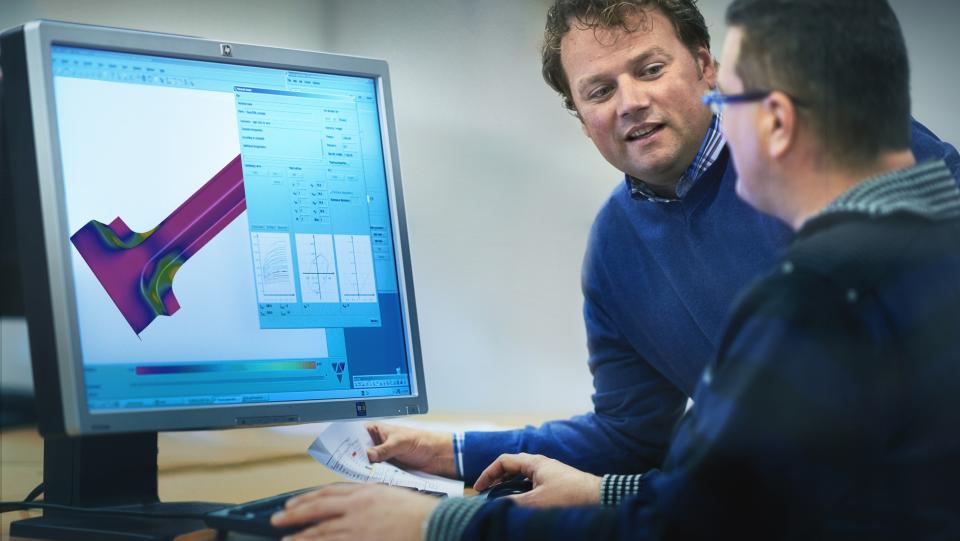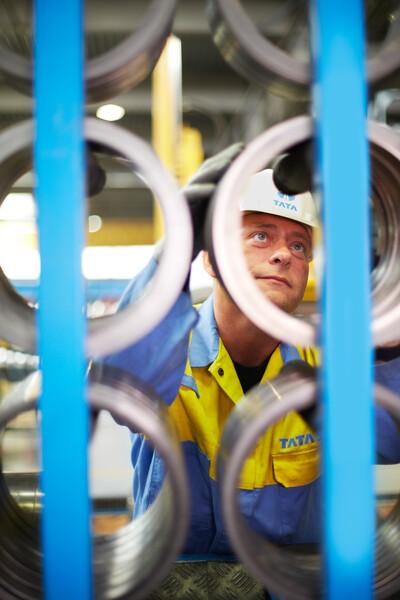“Rubbish in rubbish out!” This phrase originated in the 1970’s when computers were first used in Universities, today it can be associated with forming or crash simulations and relates to the importance of having high quality material data to feed into your simulations to ensure you don’t, in fact get rubbish out!
Time pressure is quite simply part of life today. There is never enough time and someone has just stamped on the accelerator regarding the rate of change concerning electrification and sustainability. Essential though to this (absolutely) is we need the right tools to enable this change. Accurate simulations are part of this, for example enabling different options to be quickly assessed and discarded, or accepted and adopted into a design. Another example is facilitating right-first-time during TTO (tool try out) or vehicle testing to avoid multiple, expensive, time consuming iterations. Accurate, high quality material data is a key part of improving simulation accuracy.
Where do you get this quality data?
You can of course generate it yourself, however this costs considerable time and effort. We estimate about €50k and about a month to generate a full material data sheet and €15k and 2 weeks for a ready-to-run material card. At Tata Steel we have recognised the need for access to quality data and developed the Aurora® Online database. This database contains a comprehensive collection of data covering the majority of our Automotive product range from forming grades to AHSS. It is available in the form of pdf brochure, excel data sheets (with the raw data for your own processing) or easily accessible Ready-to-Run material cards for the most widely used software packages such as Autoform or LSDyna. Forming, crash and fatigue data are examples of just some of the data available in Aurora Online.
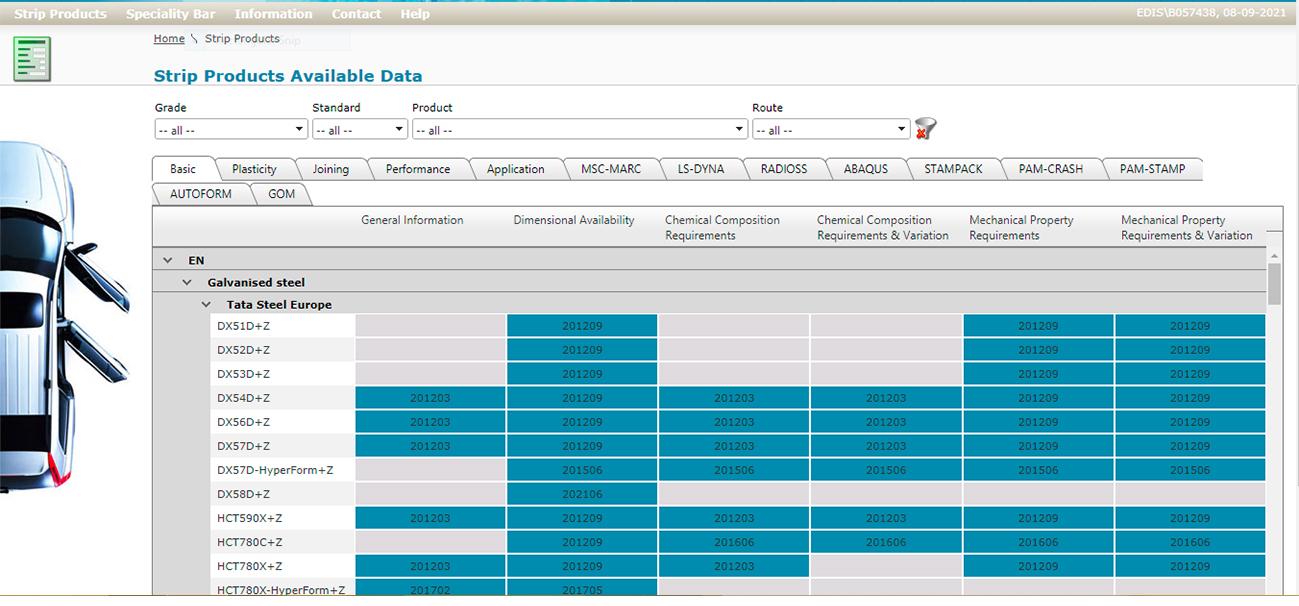
Aurora Online contains basic, plasticity, joining and performance data
What about the quality of the data?
For that matter what is meant by quality? At Tata steel we interpret “quality” in this context to mean representative of the material we supply you. To this end our experts have developed a procedure involving using stochastic analysis of actual production data to identify a coil with average properties for each grade. This coil data is then used to generate the Ready-to-run material cards and the majority of the data sheet content.
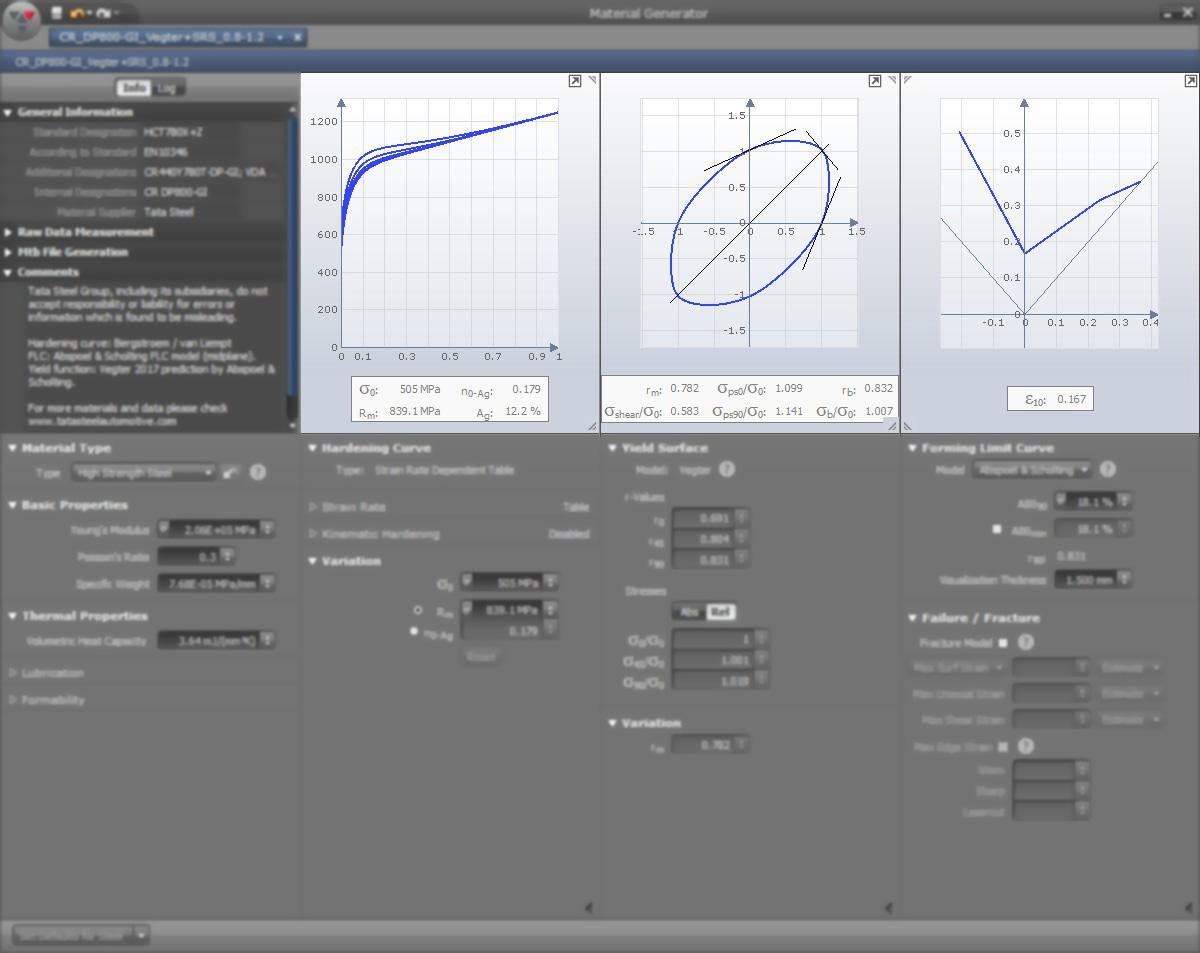
Material data including Hardening curves, yield loci and Forming limit curves can be downloaded from Aurora Online as raw data or as ready to run material cards
Another definition we put to “quality” is breadth of data available at your fingertips. Through Aurora Online you can find data on the majority of the Tata Steel product range. In addition we also take into account gauge. For example for DP800 GI we don’t just have one data set, but three depending on the gauge you are interested in. Another option is so called “worst case properties”. By this we mean the material properties least favourable for a type of performance, for example for forming this would be the properties with lowest A80, n and r values. Using the approach developed by our experts to choose an “average” coil, mentioned earlier, we can, on request, adapt this to select the “worst” coil. This would represent the least formable material we would typically supply you for a specific grade within the norm, to give that extra robustness to your simulations.
Time saving techniques
By having all this data in Aurora Online we would sincerely hope this could cut down significantly on any material testing costs from your side. You might wonder how we have managed to generate such a large range of data without drowning ourselves in years of testing! The answer to this is in the various techniques, (again developed by our excellent experts!) which enable FLC’s (Forming Limit Curves), yield loci and high strain rate data to be created from simple tensile test specimens (or a slightly modified version for the strainrate). These techniques have been pivotal in creating the breadth of data we have available. I am not going to go into these techniques here but you can find the details in the public domain as various papers have been published. Look out for the Abspoel, Scholting and Vegter names, or of course contact us and we are happy to explain these.
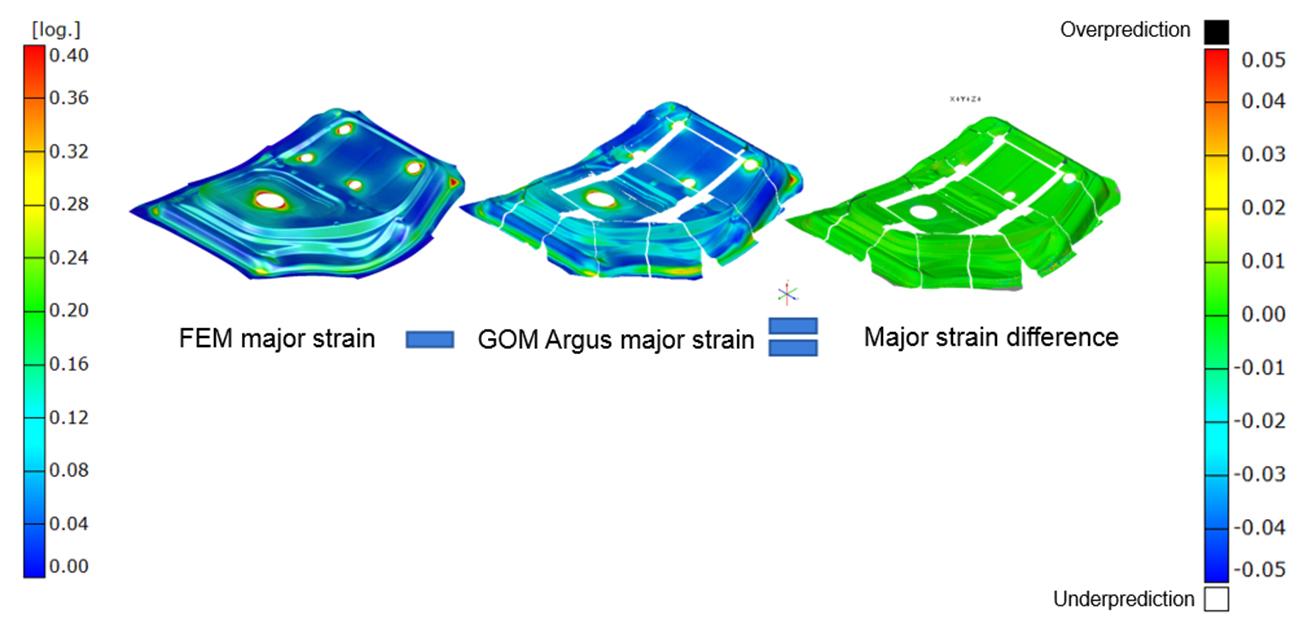
Example FEM simulation of door inner using data from Aurora Online compared to measured strain shows a close match demonstrating the accuracy of the simulation.
In-house material cards, so why need Aurora Online?
For most OEM’s there is an in-house data set developed by your experts. This makes sense since often the series material supplier is not known at the time feasibility simulations are done. So where is the need for Aurora Online then? We can think of three possible scenarios:
- New products – you have to start somewhere!
- Validation – occasionally it is needed to check that the in-house material cards are still representative of the material you get. Access to Aurora Online allows you to do this in your own time, without having to call us.
- Research – what if your simulation results are not quite what you expect? By using the decks in Aurora Online you can experiment a bit; try the Tata Steel card to see if it makes a difference? Try a card with a different yield locus (Vegter vs Hill48) or with strainrate included. Maybe this will bring new light to the problem. You can do this because we not only have material cards for all the main software packages, but also multiple versions containing both basic and more advance material models.
Now we know not all experts agree on which material model give you the best results and you may have questions or doubts that need answering before you are comfortable using our data. We absolutely welcome this and you can contact our experts directly through the links in Aurora Online. The additional option in Aurora Online to download the datasheets with the raw data gives transparency but also the flexibility to process data in your preferred way which helps build confidence in our data and thus your simulations.
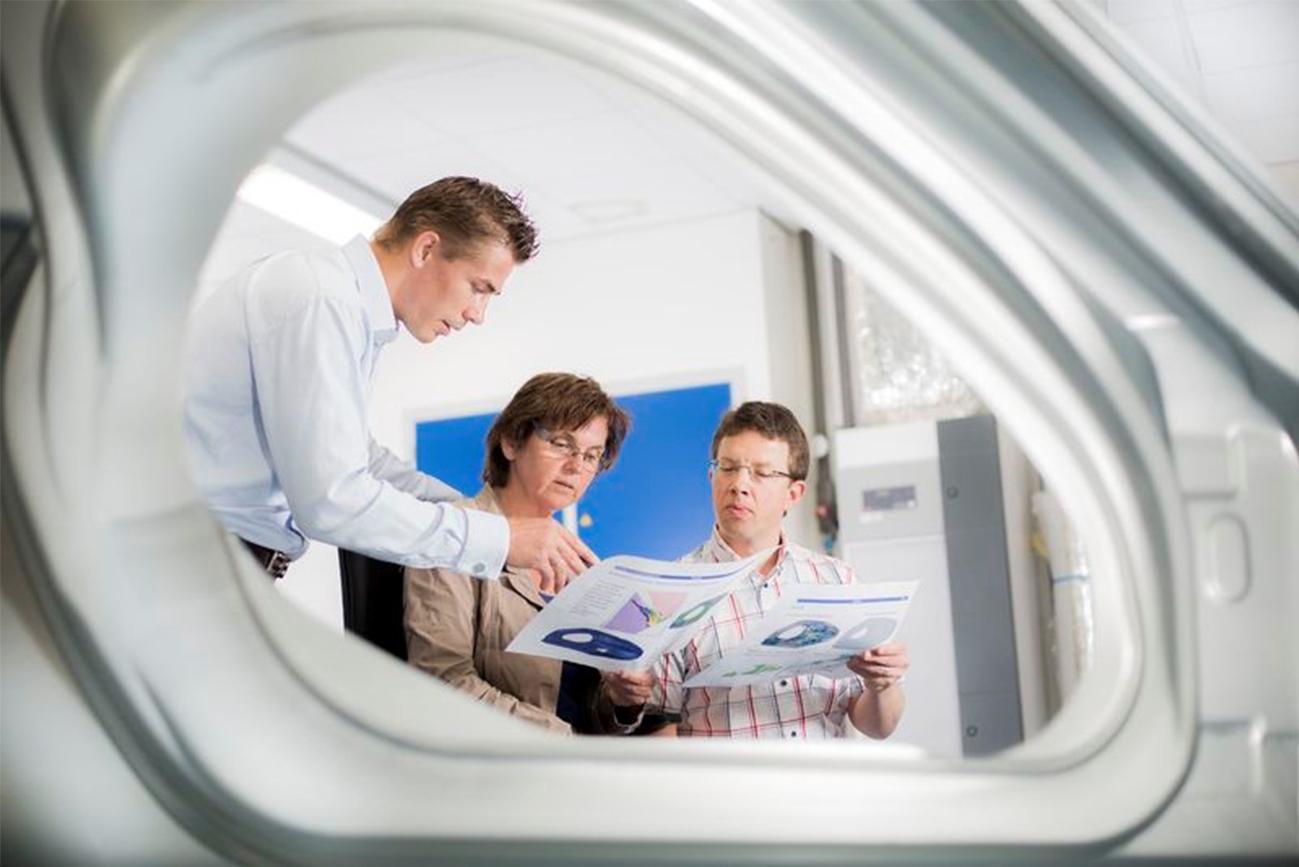
Tata Steel’s experts support customers to improve press performance for example through simulation of alternative material or designs.
Our Aurora database has been developed by our experts, is maintained by our experts and of course used by them and others within Tata Steel. In the 10yrs the database has been running we have received numerous compliments about the depth and breadth of data and so we are pretty confident we have hit the mark when it comes to data quality. We would however like to hear your view so we can continue to keep the database aligned to what you need. What can we do to further improve simulation accuracy? Where are you still not getting the data you need in the way you need it to do your jobs? We welcome your feedback so we can tackle the challenges together.
Find out more about Aurora Online.
>> Return to the main Automotive blogs page
